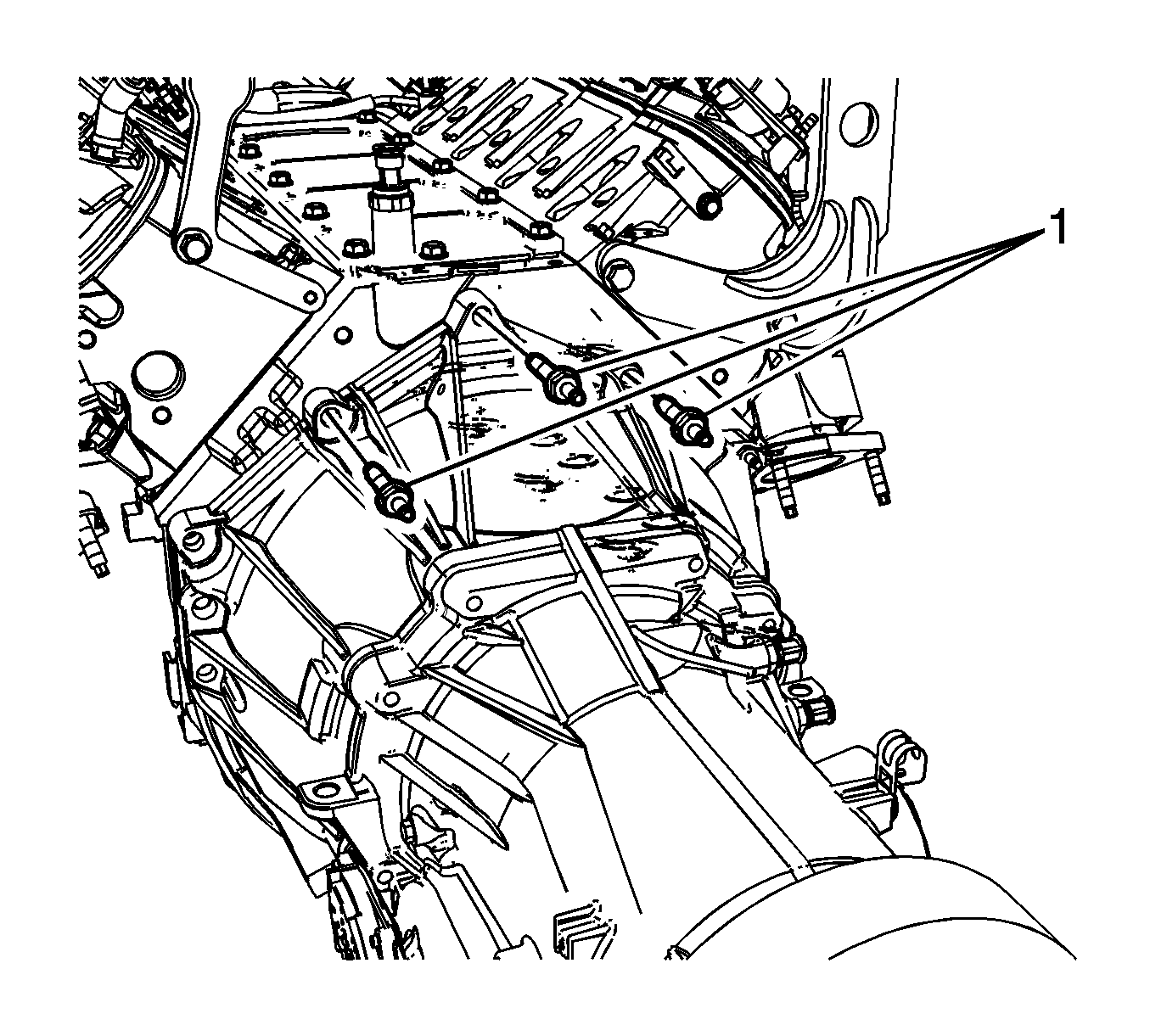
- Remove
J 21366 .
- Install an engine hoist to
J 41798 .
- Remove the engine from the engine stand.
- Install the engine.
- Mate the engine to the transmission.
- Remove the floor jack from under the transmission for support.
Caution: Refer to Fastener Caution in the Preface section.
- Install the 3 upper transmission bolts/studs (1).
Tighten
Tighten the bolts/studs to 50 N·m (37 lb ft).
- Raise the vehicle.
- Install the lower transmission bolt/studs.
Tighten
Tighten the bolts/studs to 50 N·m (37 lb ft).
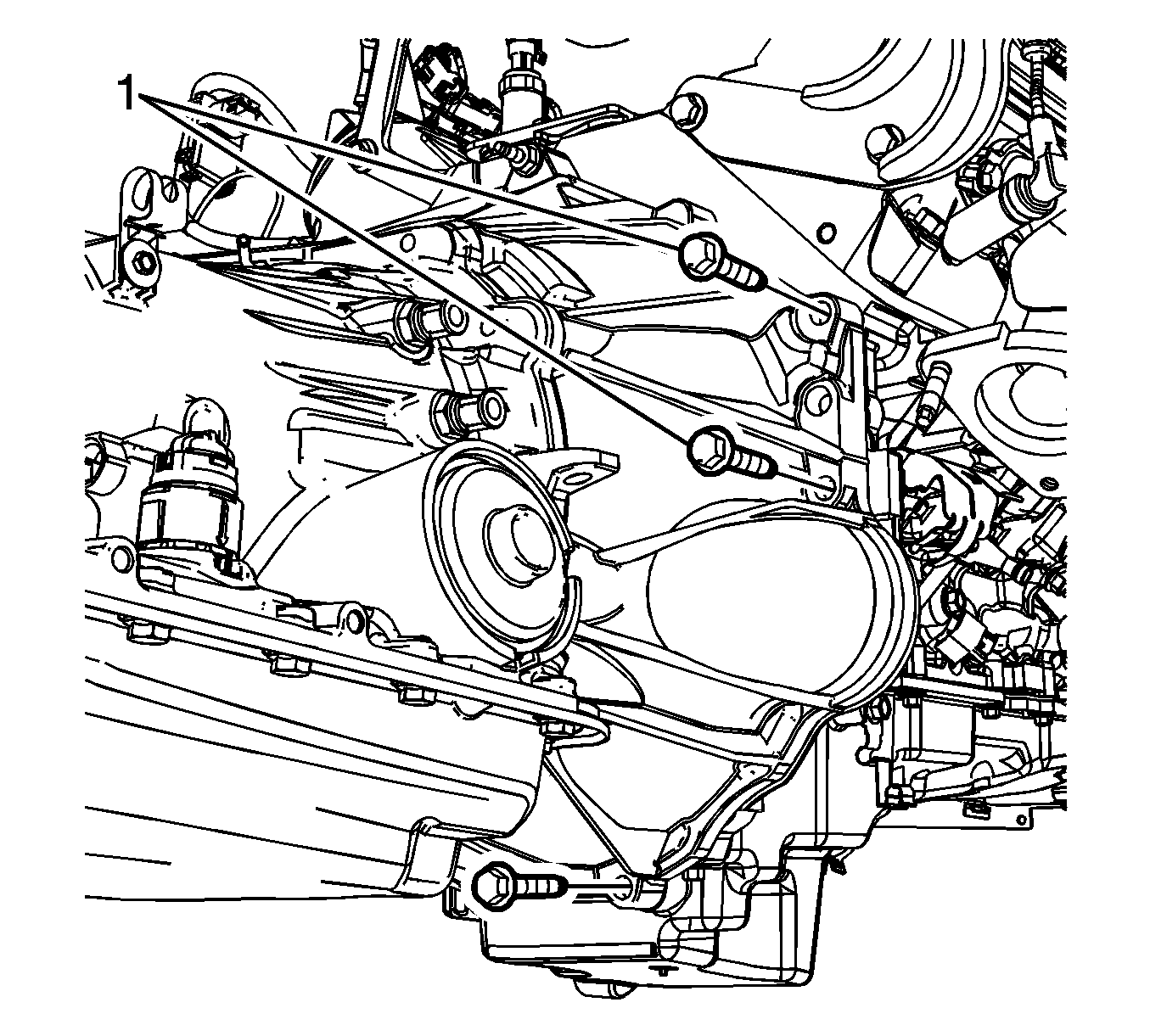
- Install the lower transmission bolts (1) on the right and left side.
Tighten
Tighten the bolts/studs to 50 N·m (37 lb ft).
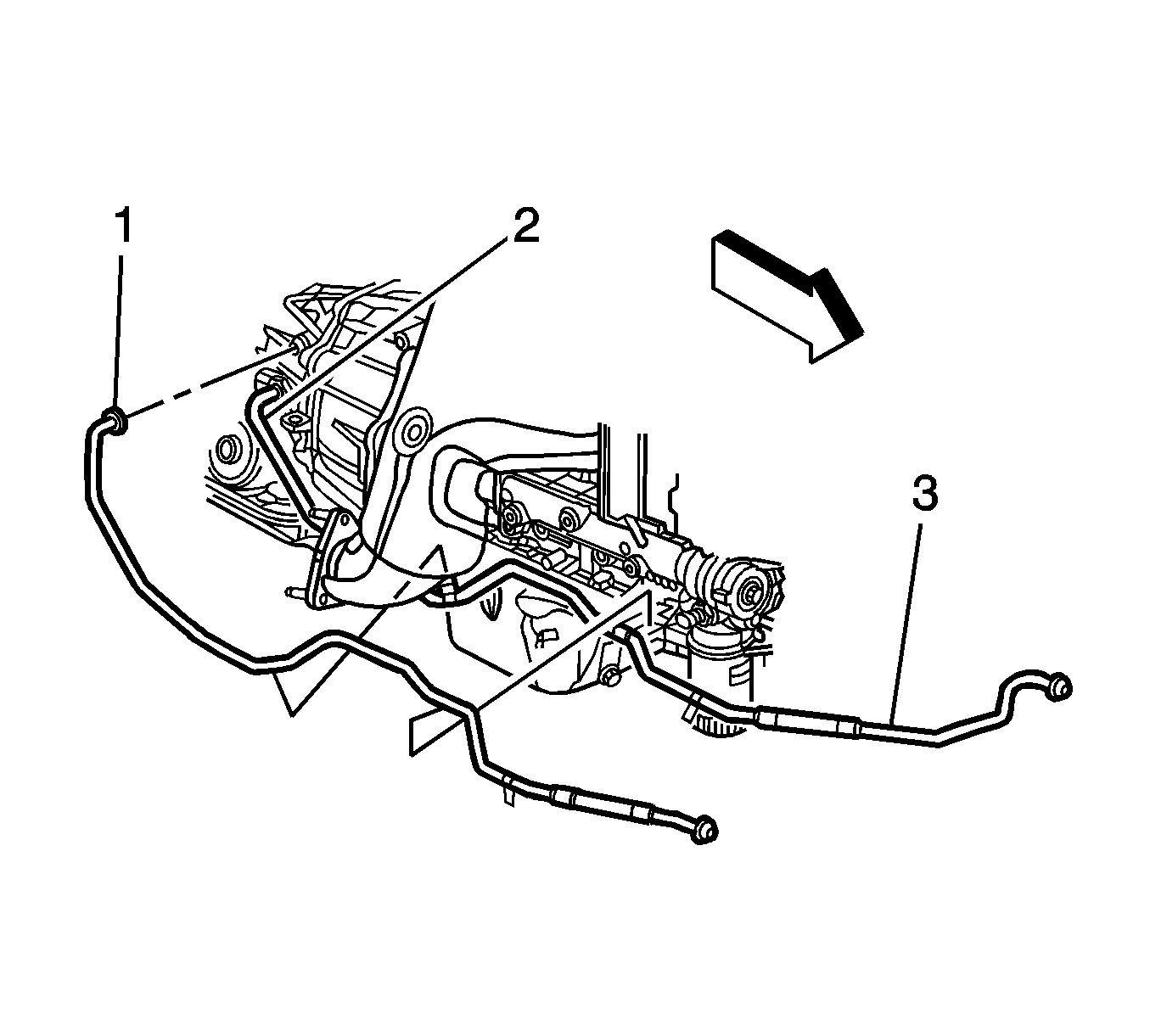
- Install the transmission fluid cooler lines to the right side of the engine.
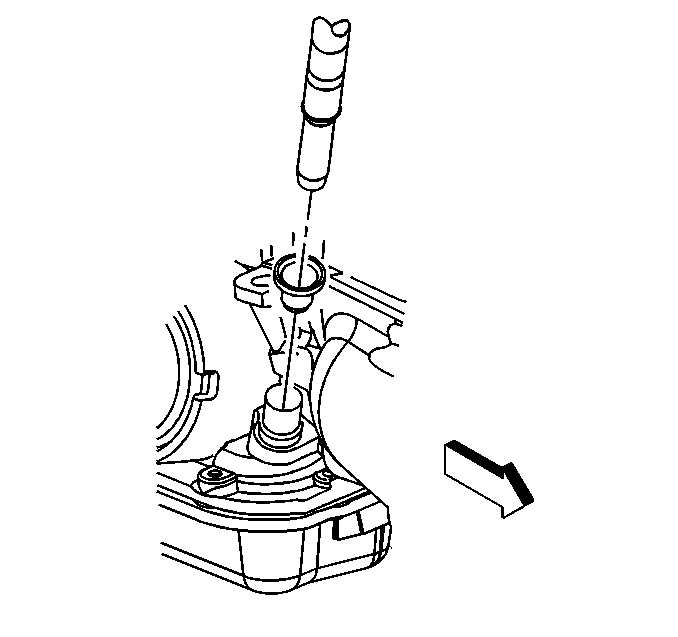
- Install the transmission oil level indicator tube.

- Install the transmission oil level indicator tube nut.
Tighten
Tighten the nut to 10 N·m (89 lb ft).
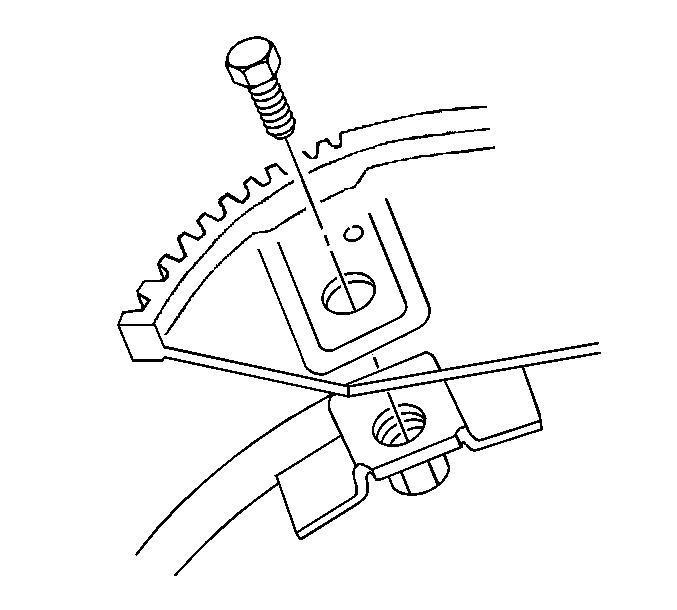
- Install the torque converter bolts.
Tighten
Tighten the bolts to 60 N·m (44 lb ft).
- Install the 3 bracket bolts from both the right and the left side engine mounts. Refer to
Engine Mount Replacement - Left Side and
Engine Mount Replacement - Right Side
- Install the catalytic converters. Refer to
Catalytic Converter Replacement - Left Side and
Catalytic Converter Replacement - Right Side.
- Lower the vehicle.
- Install the heater inlet and outlet hoses. Refer to
Heater Inlet Hose Replacement and
Heater Outlet Hose Replacement.

- Using
J 38185 , install the outlet hose (1) to the water outlet.

- Using
J 38185 , install the inlet hose to the water outlet.
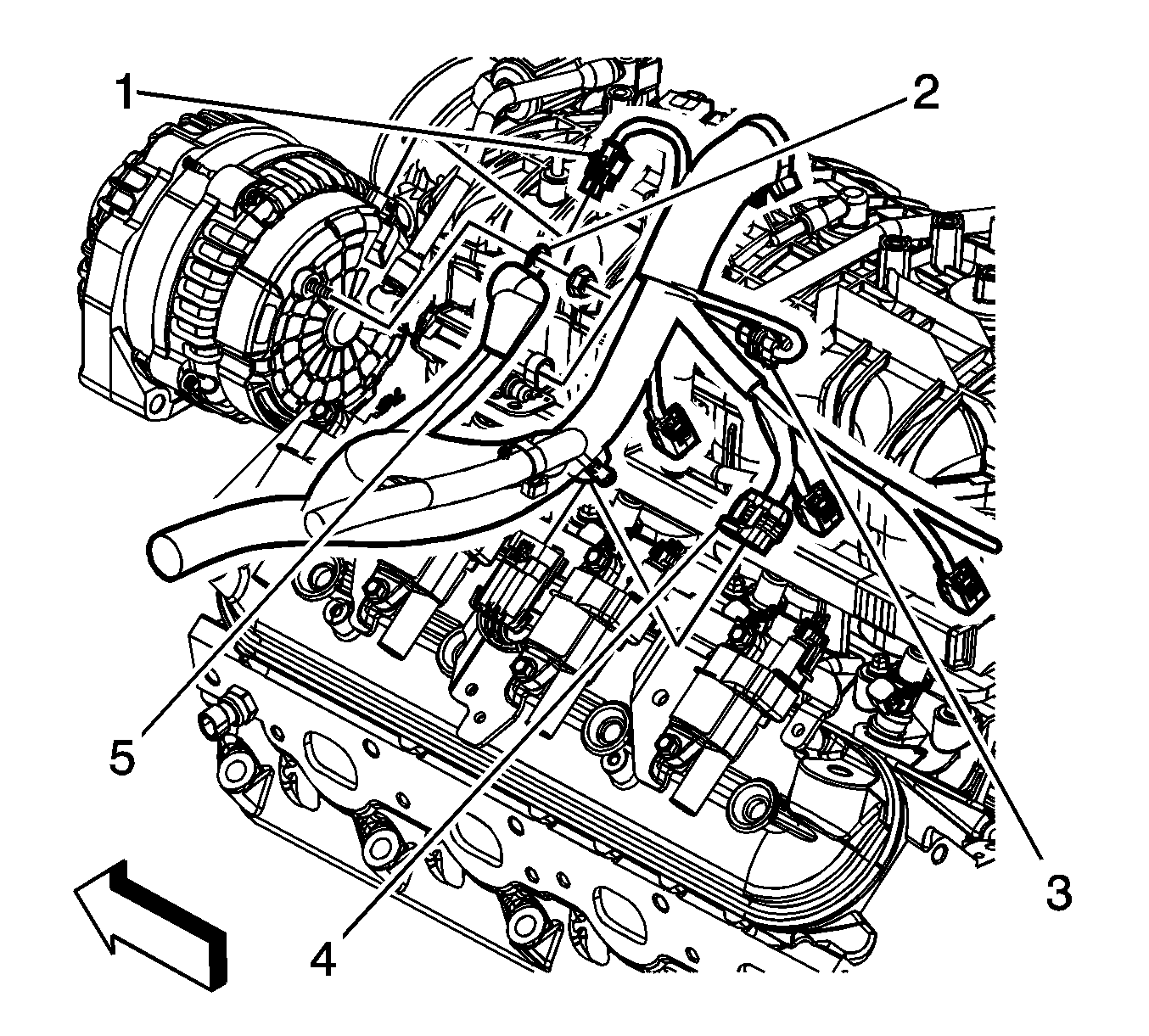
- Install the engine wiring harness/positive battery cable (2) to the generator.
- Install the engine wiring harness/positive battery cable nut to the generator.
Tighten
Tighten the nut to 9 N·m (80 lb in).
- Position the engine wiring harness/positive battery cable boot (5).
- Connect the engine wiring harness electrical connector (1) to the generator.
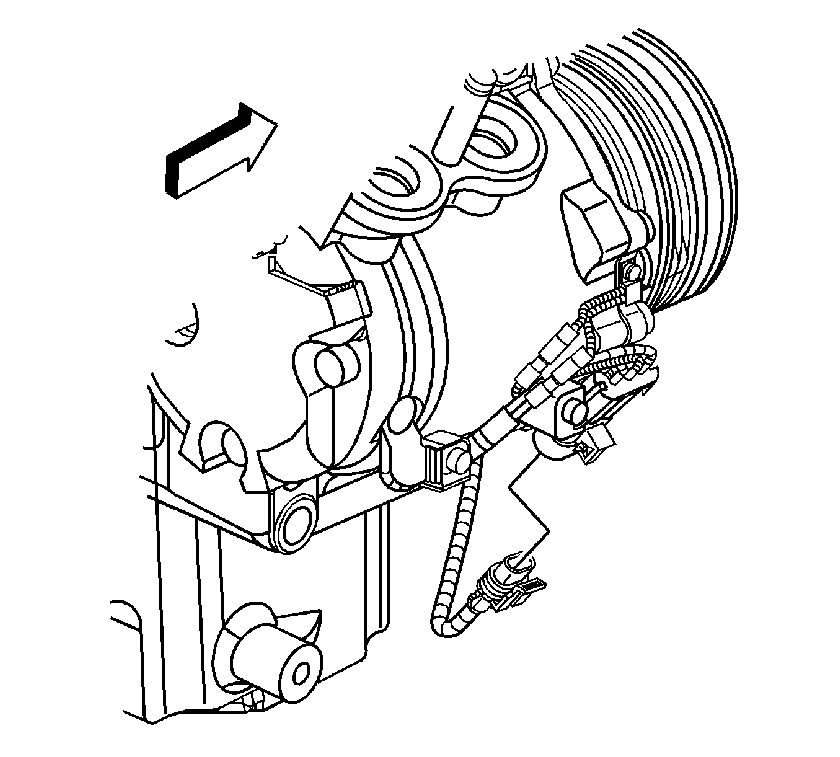
- Gather all branches of the engine wiring harness and position the harness over the engine.
- Raise the vehicle.
- Install the starter. Refer to
Starter Motor Replacement.
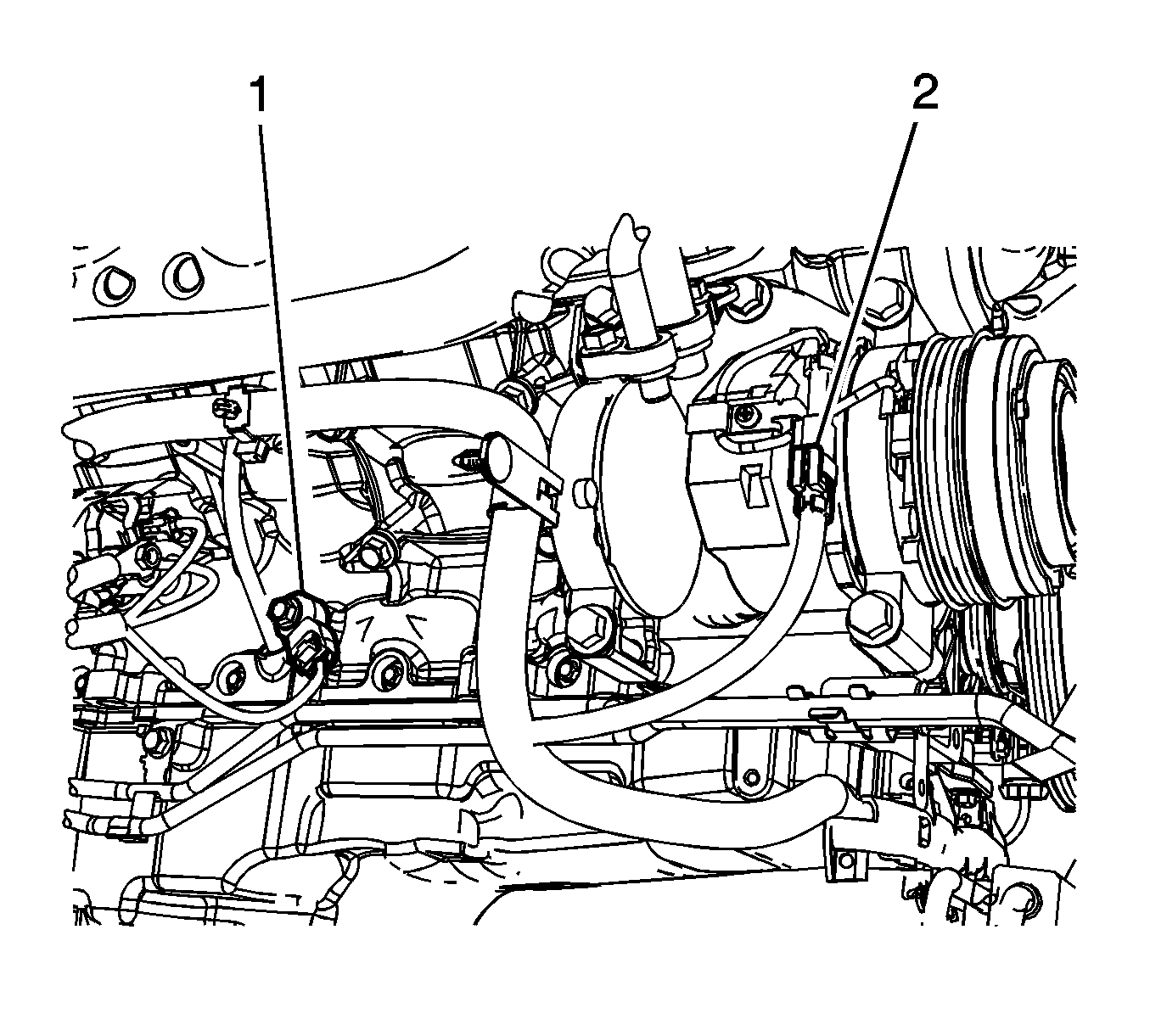
- Connect the following connectors:
| • | Block heater electrical connector. |
| • | A/C pressure switch electrical connector (2). |
| • | Left and right side knock sensor electrical connector (1). |
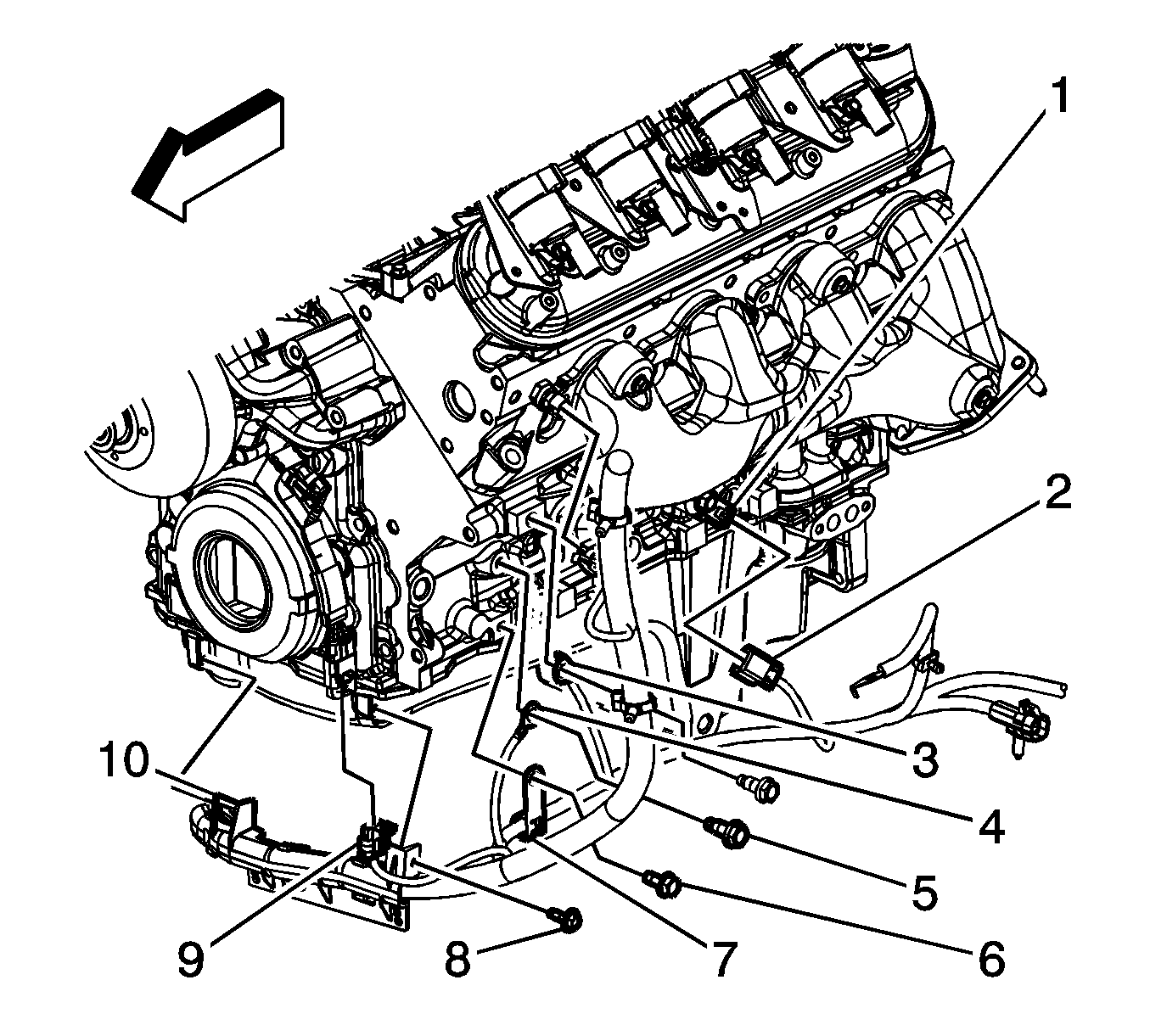
- Connect the engine wiring harness electrical connector (9) to the CMP sensor wire harness.
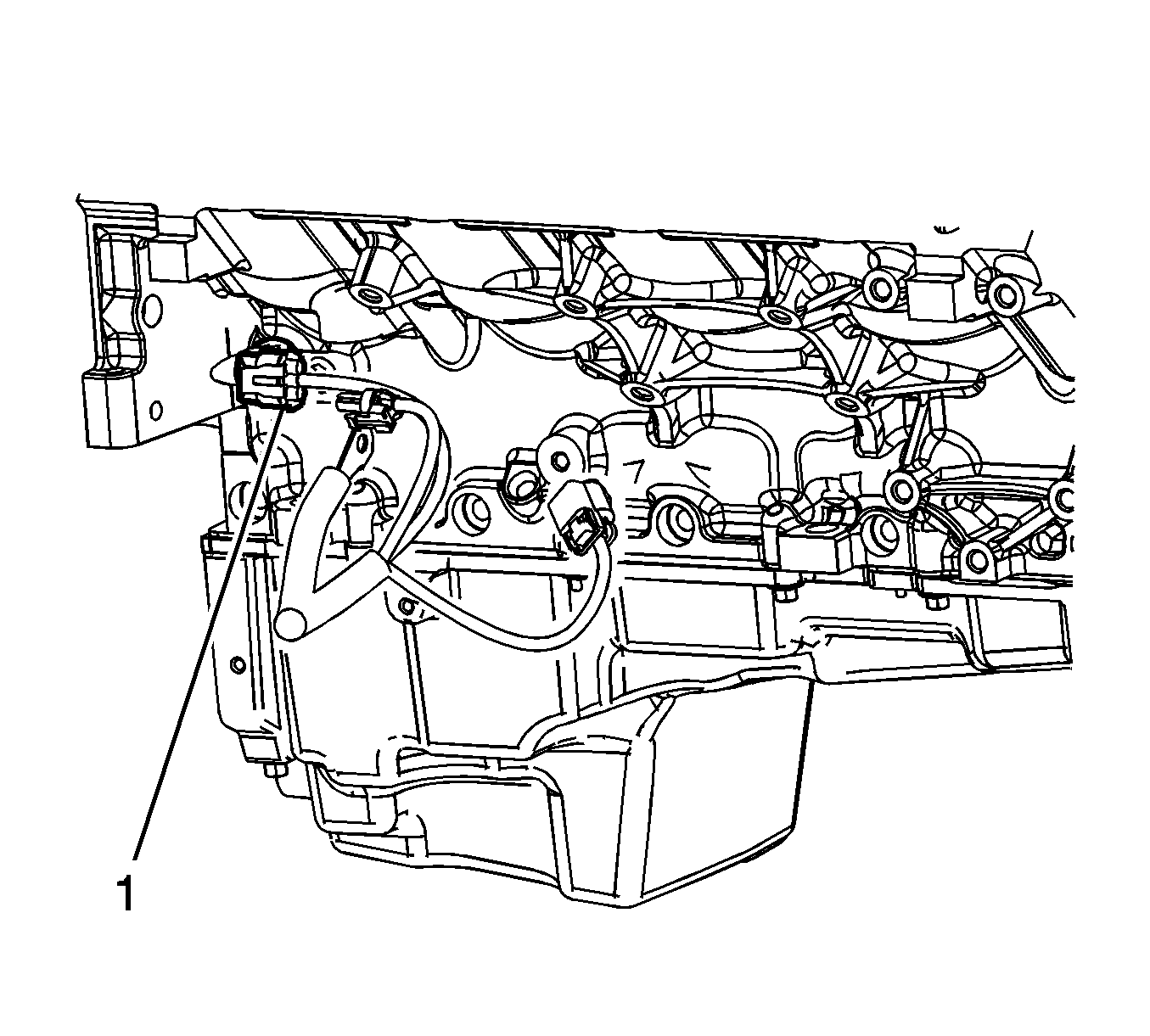
- Connect the engine wiring harness electrical connector (1) to the CKP sensor.
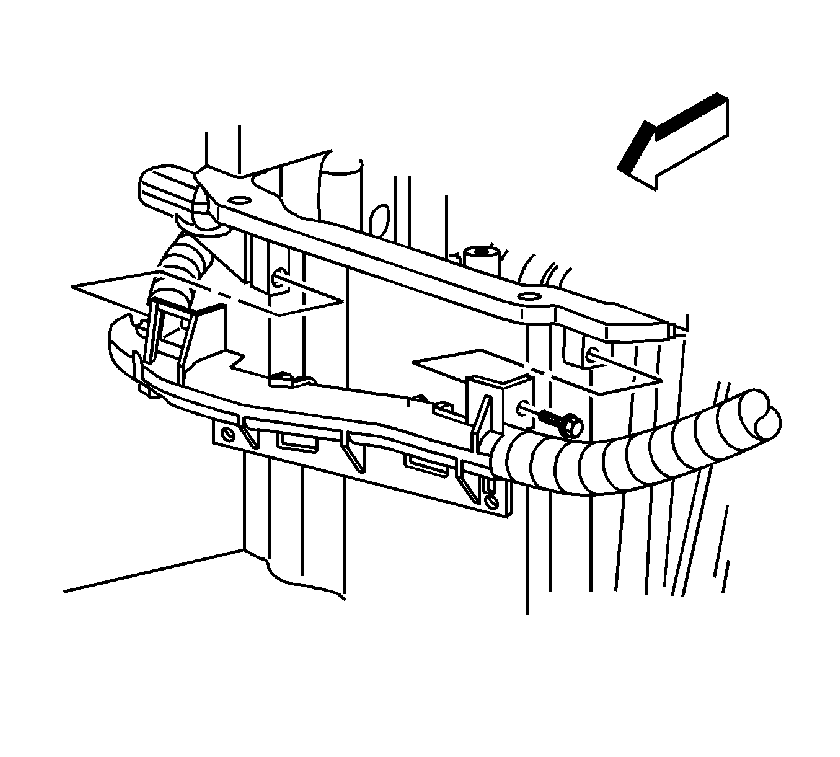
- Install the battery cable channel to the oil pan.
- Install the battery cable channel bolt.
Tighten
Tighten the bolt to 12 N·m (106 lb in).
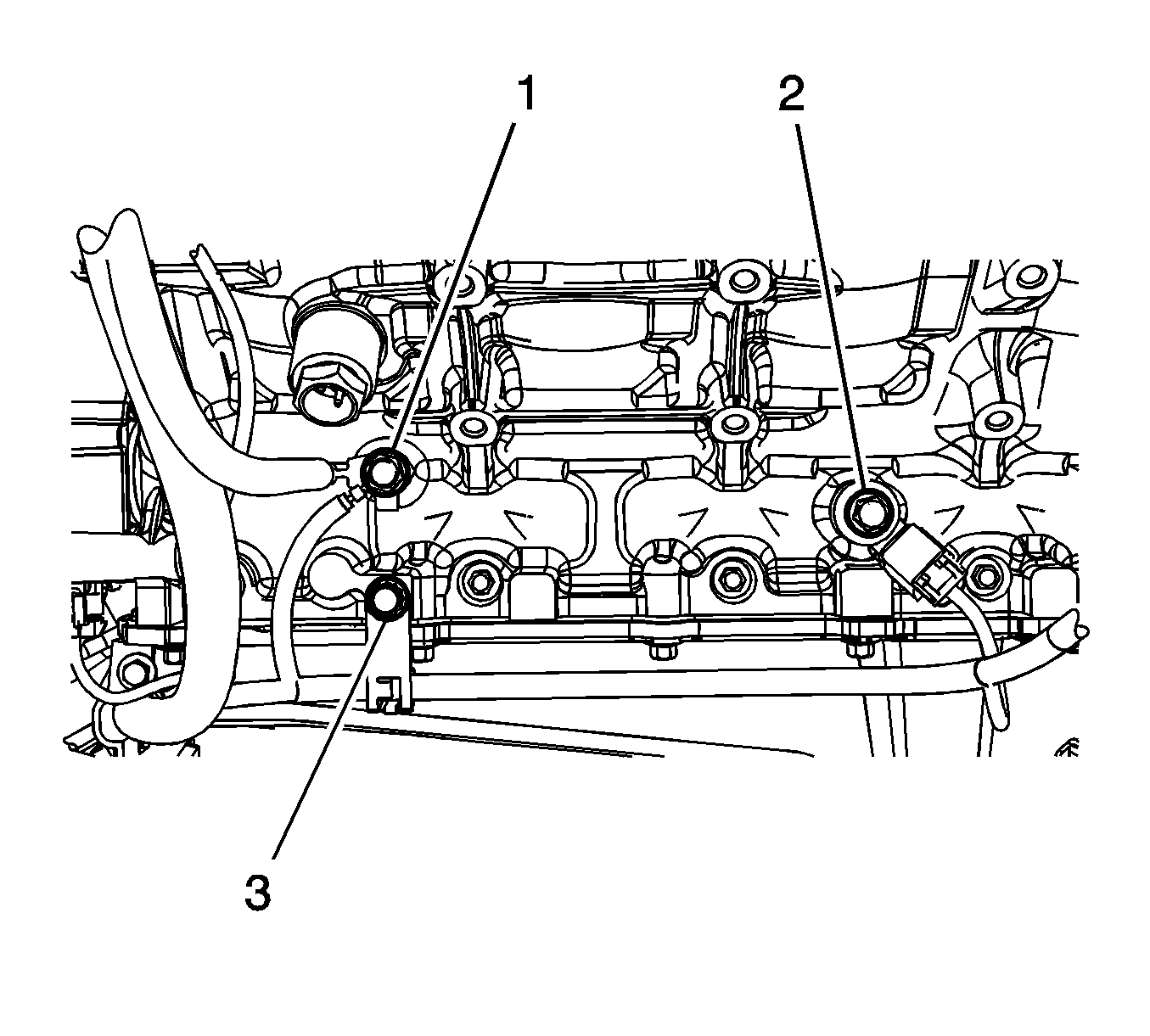
- Install the engine harness bracket bolt (3).
- Install the ground terminal bolt (1).
Tighten
Tighten the bolt to 25 N·m (18 lb ft).
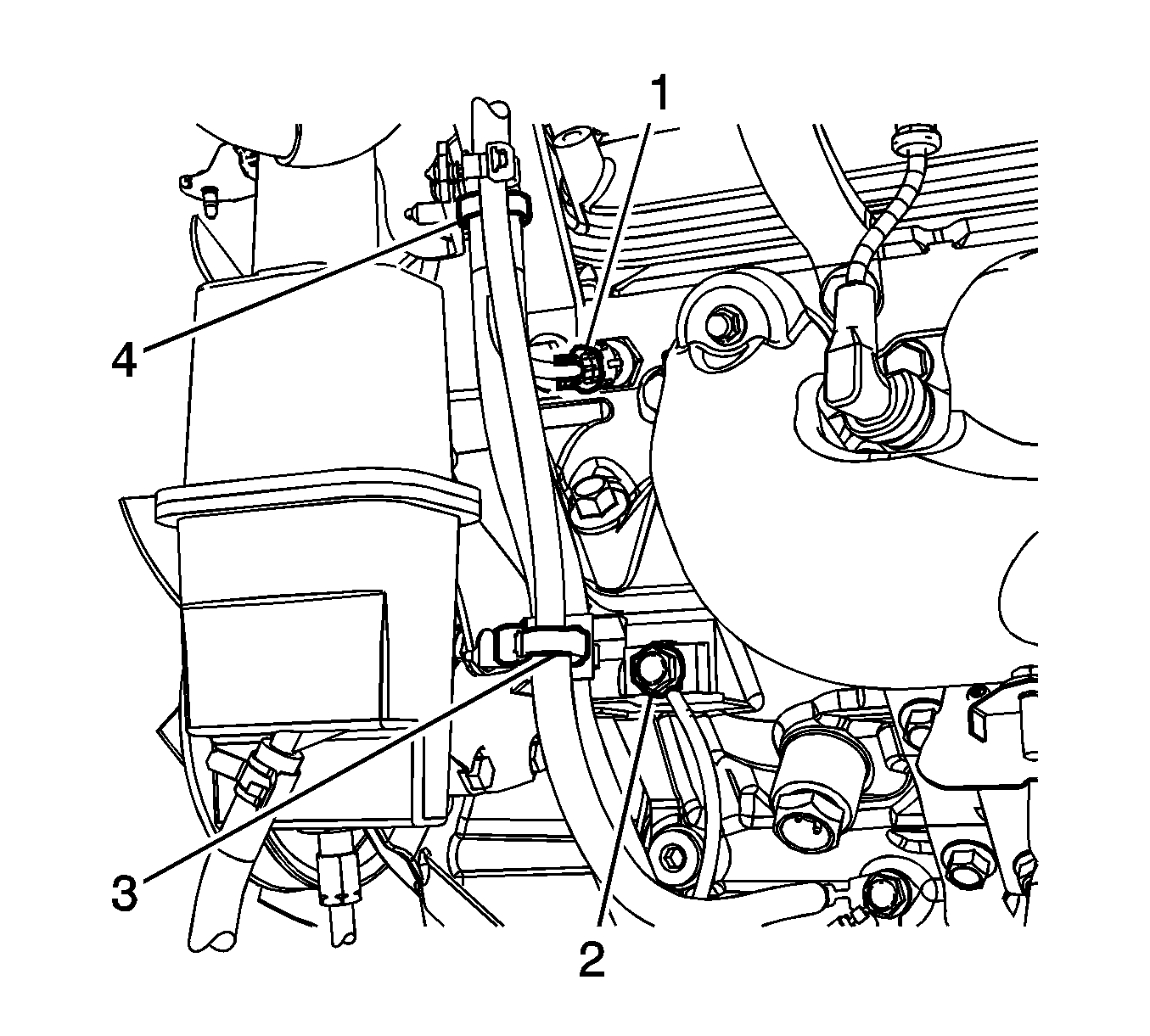
- Install the retaining clips (3, 4) to the brackets.
- Install the ground terminal bolt (2).
Tighten
Tighten the bolt to 25 N·m (18 lb ft).
- Connect the ECT sensor (1).
- Connect the oil pressure sensor and the oxygen sensors at the rear of the engine.
- Lower the vehicle.
- Install the intake manifold. Refer to
Intake Manifold Replacement.
- Install the radiator. Refer to
Radiator Replacement.
- Recharge the refrigerant. Refer to
Refrigerant Recovery and Recharging.
- Connect the negative battery cable. Refer to
Battery Negative Cable Disconnection and Connection.
- Remove the fender covers from both fenders.
- Prelube the engine. Refer to
Engine Prelubing.
- Perform the CKP system variation learn procedure. Refer to
Crankshaft Position System Variation Learn.
- Install the hood. Refer to
Hood Replacement.
Note: After an overhaul, the engine should be tested. Use the following procedure after the engine is installed in the vehicle.
- Test the vehicle using the following procedure:
| 48.1. | Disable the ignition system. |
| 48.2. | Crank the engine several times. Listen for any unusual noises or evidence that parts are binding. |
| 48.3. | Enable the ignition system. |
| 48.4. | Start the engine and listen for unusual noises. |
| 48.5. | Check the vehicle oil pressure gauge or light and confirm that the engine has acceptable oil pressure. |
| 48.6. | Run the engine speed at about 1,000 RPM until the engine has reached normal operating temperature. |
| 48.7. | Listen for sticking lifter and other unusual noises. |
| 48.8. | Inspect for fuel, oil and/or coolant leaks while the engine is running. |































